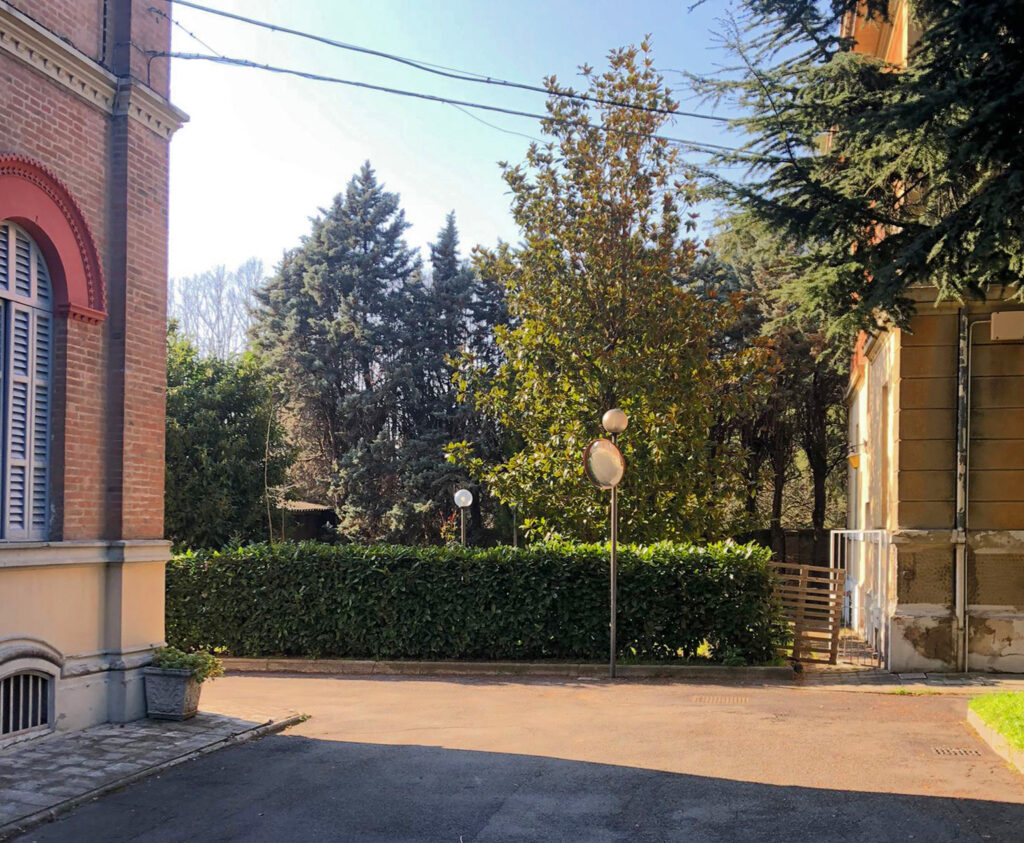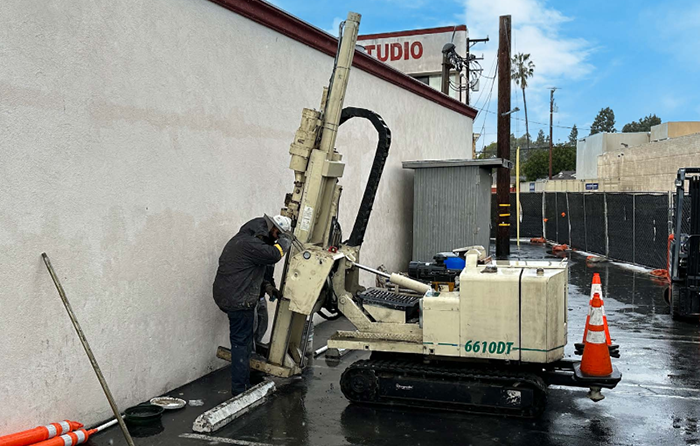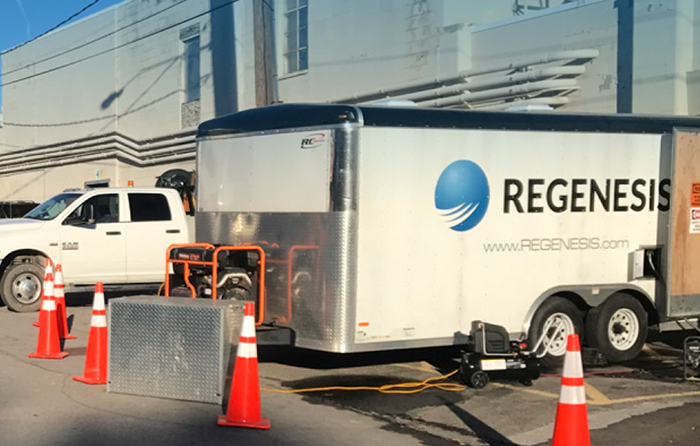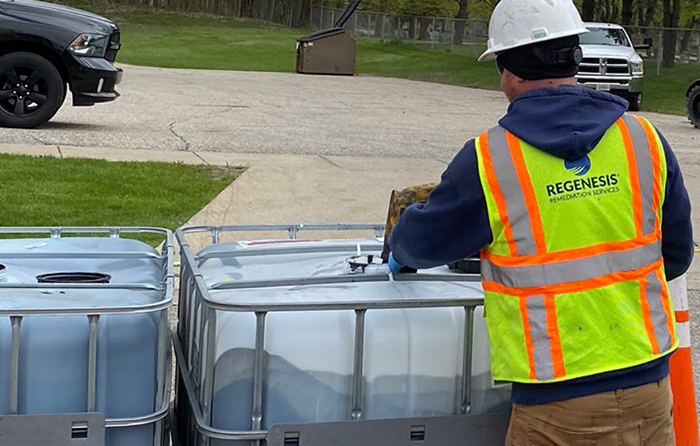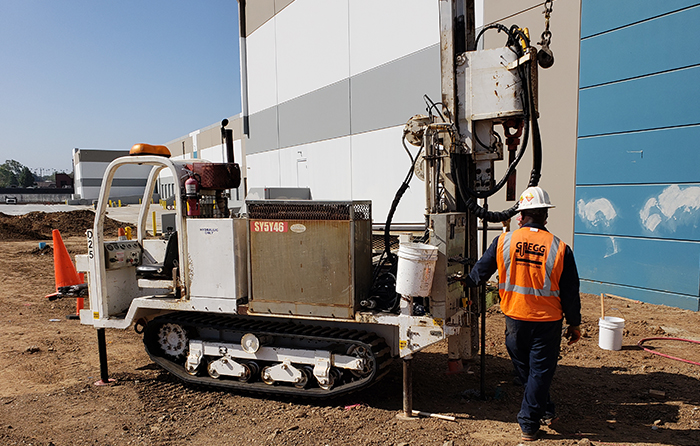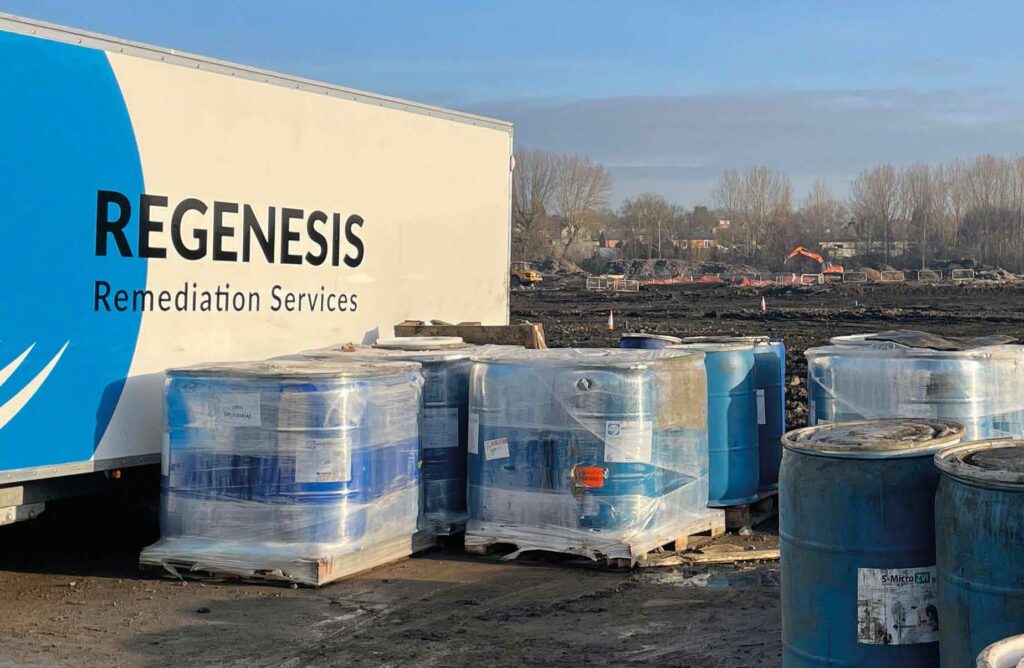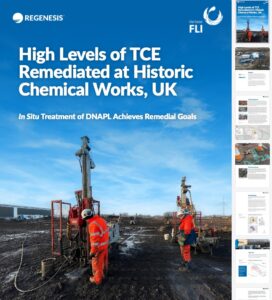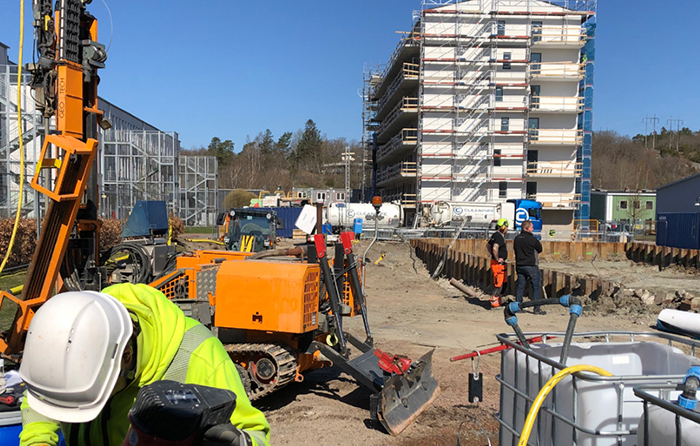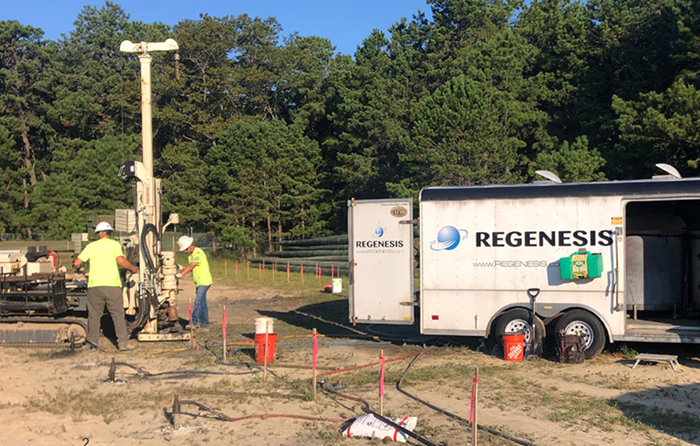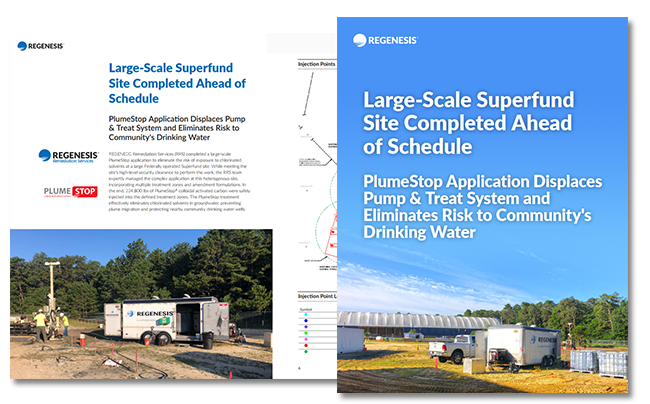Advanced In Situ Barrier Treatment Secures No Further Action
S-MicroZVI and PlumeStop drive multi-year ISCR treatment success, meeting stringent regulatory levels
Case Study Highlights:
-
Successful groundwater treatment for TAUW in a church oratory garden in Italy
-
PCE reduced to below regulatory target without any VC build-up, resulting in No Further Action (NFA)
-
Simultaneous remediation using advanced colloidal technologies enhanced the chemical degradation and sorption processes, optimizing treatment efficacy.
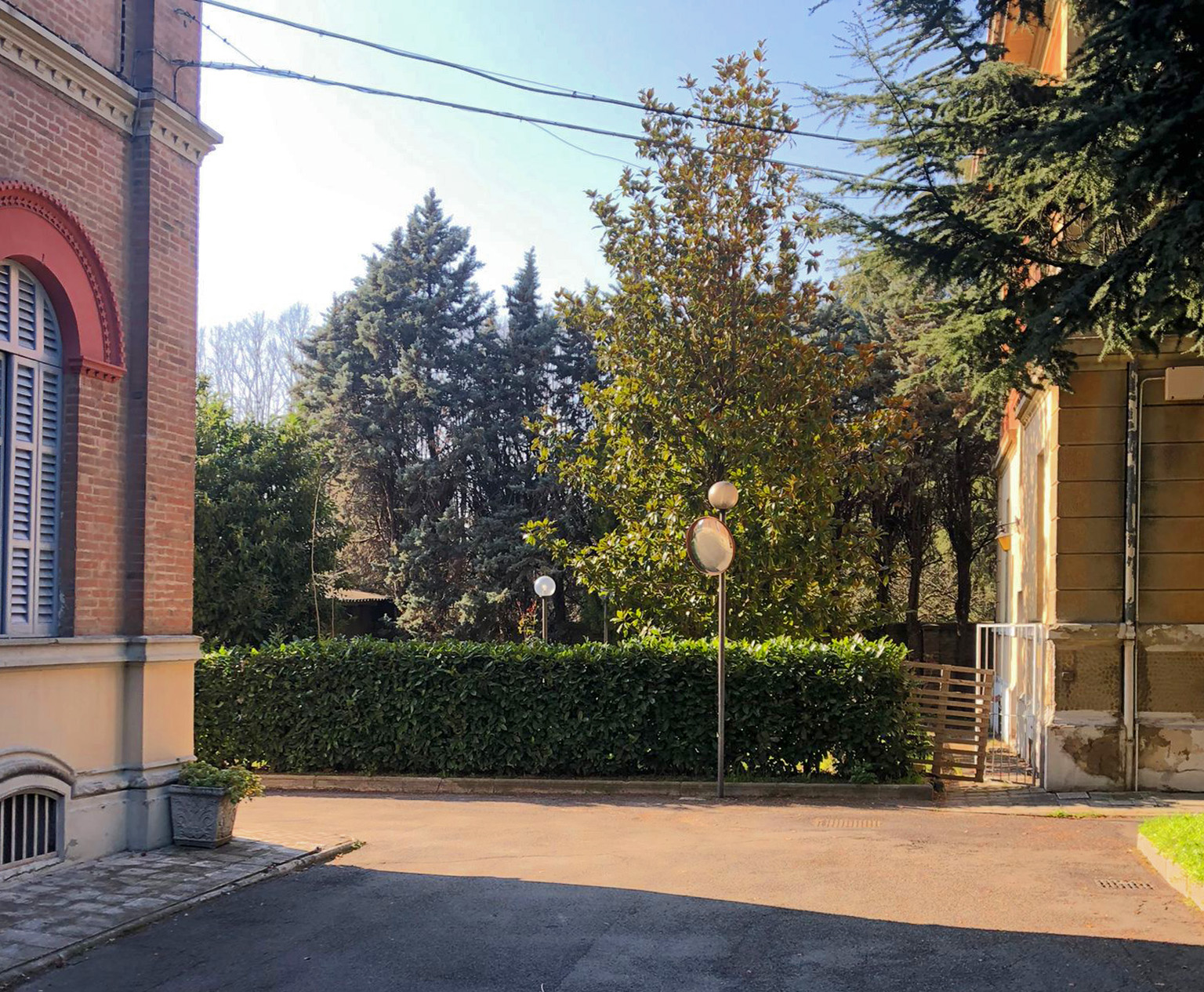
A vacant industrial site in an urban area in Northern Italy, contaminated by total petroleum hydrocarbons (TPH) from underground storage tanks, was effectively remediated using PetroFix colloidal activated carbon technology. The project required substantial and rapid reductions of TPH to allow for planned site redevelopment. Following the application, significant contamination reduction was achieved within months, meeting stringent regulatory standards. These results highlight the utility of PetroFix in complex, urban environments requiring rapid and non-disruptive remediation solutions.
Rapid Elimination of Chlorinated Solvents
Case Study Highlights:
-
Combined approach using 3 REGENESIS remediation products resulted in >99% reduction in CVOC concentrations
-
90% reduction goal achieved within 4 months post-application
-
Ongoing monitoring indicates the continued effectiveness of the treatment, with additional reductions expected in the following months
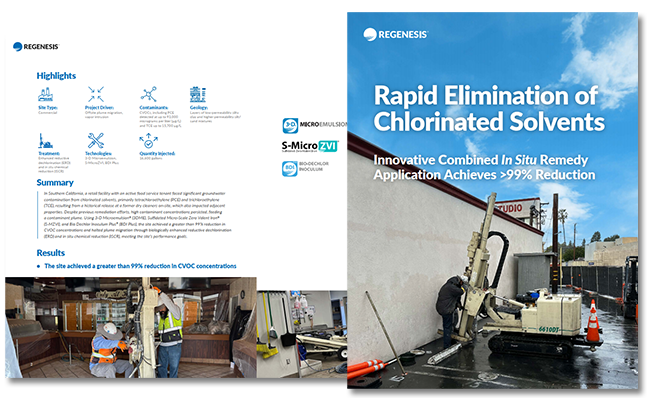
In Southern California, a retail facility with an active food service tenant faced significant groundwater contamination from chlorinated solvents, primarily tetrachloroethylene (PCE) and trichloroethylene (TCE), resulting from a historical release at a former dry cleaners on-site, which also impacted adjacent properties. Despite previous remediation efforts, high contaminant concentrations persisted, feeding a contaminant plume. Using 3-D Microemulsion® (3DME), our sulfidated micron-Scale ZVI : S-MicroZVI® , and Bio Dechlor Inoculum Plus® (BDI Plus), the site achieved a greater than 99% reduction in CVOC concentrations and halted plume migration through biologically enhanced reductive dechlorination (ERD) and in situ chemical reduction (ISCR), meeting the site’s performance goals.
New York Brownfield Site Achieves Site Closure
Case study highlights
In situ remedy replaces ex situ system and achieves PCE and TCE cleanup targets at former metals manufacturing site:
-
a PlumeStop permeable reactive barrier (PRB) replaces pump-and-treat system and achieves site closure
-
Concentrations reduced from 500 µg/L to below 1 µg/L for 6 consecutive quarters
-
Significant cost and energy savings achieved by decommissioned pump-and-treat system
7m 47s reading time
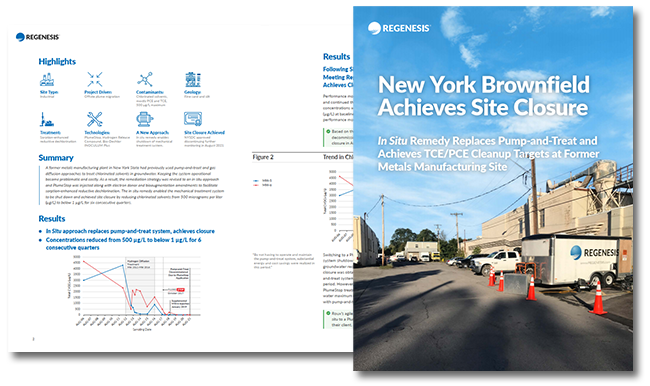
At a former metals manufacturing facility in upstate New York, historic use of chlorinated solvents had resulted in groundwater contamination with tetrachloroethene (PCE) and trichloroethene (TCE). A pump and treat system had been operational on the site for 10 years, successfully reducing contaminant concentrations, but could not reach the clean up targets required for site closure.
Benchmark, a leading engineering and redevelopment consulting company, quickly developed an in situ approach to achieve the project objectives and facilitate site closure. After evaluating remedial alternatives, Benchmark proposed a new Corrective Action Plan (CAP), specifying the in situ application of PlumeStop® (colloidal activated carbon), Hydrogen Release Compound® (HRC), a controlled-release electron donor, and Bio-Dechlor INOCULUM Plus® (BDI Plus), a bioaugmentation culture containing Dehalococcoides sp. and other beneficial microbes.
Challenging Fast-Moving, High Concentration Chlorinated Solvent Plume Effectively Treated
Case study highlights
A permeable reactive barrier installed using advanced colloidal technologies demonstrates pilot test’s effectiveness treating a fast-moving, high-concentration chlorinated solvent plume in groundwater:
-
Within a month of the application, the highest concentrations were reduced by 98 percent.
-
PlumeStop and S-MicroZVI co-injected barrier treats CVOCs for >3 years in high-mass-flux aquifer
-
Additional site design testing used passive flux samplers to better understand contaminant mass flux
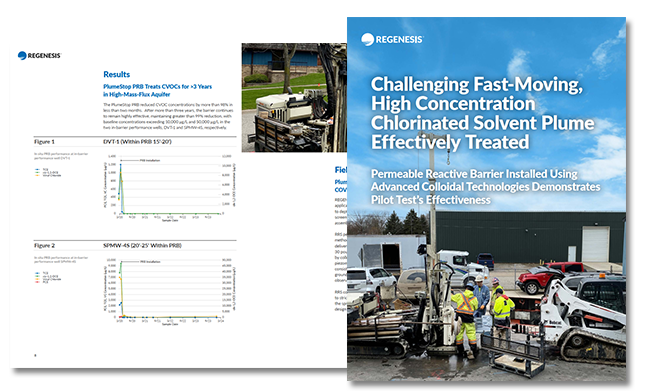
Hamp, Mathews & Associates, Inc. (HMA), working on behalf of EGLE, collaborated with REGENESIS to develop a remedial approach to address the contaminant plume. Following data review and modeling, a sorption-ERD approach was selected for implementation in a field-scale test, using the following technologies applied in an in situ permeable reactive barrier (PRB).
In this sorption-ERD approach, PlumeStop® slows the speed of contaminants (i.e., mass flux) entering a barrier, increasing the time available for the added amendments to fully reduce these contaminants into non-toxic end products such as ethene, ethane, carbon dioxide, and chloride before they leave the PRB. In combination, these remedialtechnologies create a highly reactive zone of biogeochemical reduction that can address plumes with high contaminant mass flux.
Remediation of TCE Plume Speeds Sale of Brownfield Site
Case study highlights
At a former manufacturing site in Fullerton, California, a trichloroethylene (TCE) plume in groundwater prevented the sale of the brownfield site despite past remediation efforts, including excavation and thermal treatment. A combined remedy changed that: the combination of a large-diameter auger (LDA) excavation and injection of 50,000 gallons of
S-MicroZVI® has resulted in:
-
98.5% average reduction in TCE concentrations, facilitating the property’s sale and redevelopment
-
Through 4.5 years of monitoring, TCE remains at 99.7%, reduced in the treatment zone, confirming the remediation’s long-term effectiveness.
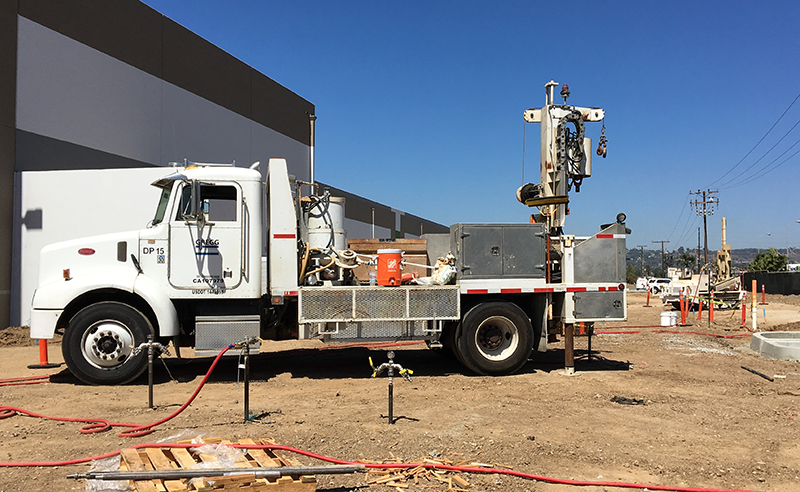
This case study reviews a former manufacturing site in Fullerton, CA, where a trichloroethylene (TCE) plume contaminated the groundwater and prevented sale of the brownfield site. REGENESIS designed an injection plan using micronscale Zero Valent Iron (ZVI) due to its proven ability to effectively reduce contaminant levels within a subsurface environment. In order to complete the remediation and move forward with the sale, Hargis + Associates worked with REGENESIS to develop an in situ chemical reduction (ISCR) design to address the plume. Regulatory limits on pounds per square inch (psi) were enforced for all injections. REGENESIS, Hargis + Associates, and Gregg Drilling worked closely with the regulatory agency to ensure that the remediation and injection of the ZVI would be completed at a low pressure.
High levels of TCE Remediated at Historic Chemical Works
Award-winning In Situ Remediation of DNAPL Achieves Remedial Goals
Case study highlights:
- Once considered one of the most environmentally contaminated sites in the UK
- REGENESIS designed and delivered a suitable and pragmatic in situ groundwater solution on behalf of Vertase FLI for a portion of the site, fitting in with the wider remediation works and site redevelopment programme.
- Combined ERD and ISCR treatment using S-MicroZVI® and 3-D Microemulsion®
- 90% TCE mass removal achieved in 12 months, exceeded the remedial goal, allowing the site redevelopment to continue apace.
- Multiple lines of evidence show ongoing, long-term reductive dechlorination, without VC stall.
- Winner of the Brownfield Award 2024 ‘Best Application of Remediation Technologies‘
Or watch the 5-min project video with site footage and interviews
PlumeStop & S-MicroZVI Barrier Reduces Chlorinated VOCs by 95% in 1 Month
Case study highlights:
- Integrated treatment protects newly constructed residential buildings from vapour risk
- The integrated treatment approach combined in situ chemical reduction (ISCR) and sorption & biodegradation in an injected permeable reactive barrier (PRB)
- The colloidal PlumeStop® and S-MicroZVI® amendments rapidly reduced CVOC concentrations to below or near the detection levels
At an ongoing residential development in Southwest Sweden, low CVOC levels in the groundwater required a remedial solution to protect the newly constructed buildings against vapour intrusion. RGS Nordic (now: Sortera) asked REGENESIS for an in situ remediation solution.
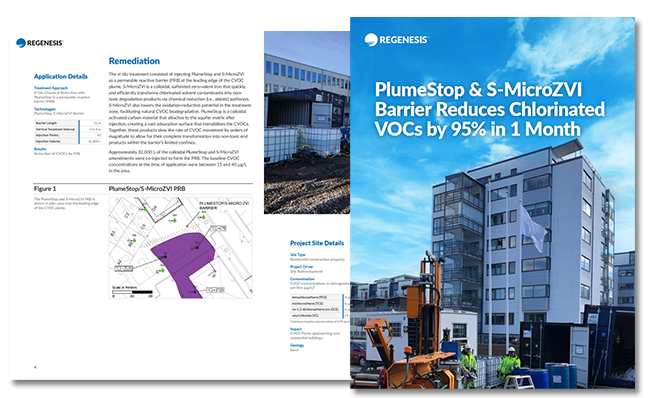
Effective In-Situ Treatment of a 1km PCE Plume in Finland
Case study highlights:
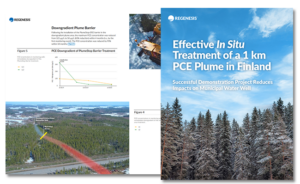 In Eastern Finland, a fast-moving PCE (perchloroethene) plume beneath a metal-processing facility was remediated to reduce impacts on a municipal drinking water source.
In Eastern Finland, a fast-moving PCE (perchloroethene) plume beneath a metal-processing facility was remediated to reduce impacts on a municipal drinking water source.
- PCE concentrations were reduced to below the drinking water limit at the municipal water supply well (concentration reductions of approximately 80% in the plume within months and 90 to 95% by 18 months)
- Results indicate that the combined treatment approach can be successfully applied in cold groundwater aquifers with low organic carbon content
- Integrated source area grid treatment (ERD) and plume barrier treatment (PlumeStop®) is an effective strategy for treating elongated chlorinated solvent plumes
PlumeStop Treatment Allows for Shut Down of Pump & Treat System
Case study highlights:
- PlumeStop treatment prevents plume migration and protects nearby community drinking water wells
- This sustainable approach eliminates the massive carbon footprint created by outdated pump-and-treat approaches
- 224,800 lbs. of PlumeStop colloidal activated carbon were safely injected into the target treatment zones
This case study reviews a large federally operated Superfund site in the USA where REGENESIS Remediation Services (RRS) completed a large-scale PlumeStop application to eliminate the risk of exposure to chlorinated solvents. Amentum, a leading American governmental and commercial services contractor, is the responsible party’s contractor. Amentum has worked with the client at this site for years, providing oversight and management of their contracting partners. The project’s sensitive nature required an enhanced awareness of health, safety, and security issues and seamless coordination between RRS, Amentum, and their client.
In Situ Chlorinated Solvent Treatment Protects Municipal Pumping Station
Remediation of a former dry cleaner site in Värnamo, Sweden
In situ remediation of groundwater impacted with high levels Tetrachloroethene (PCE) was completed at a former dry cleaning site, as the temporary installed groundwater recirculation system proved too expensive to run as a permanent solution. RGS Nordic carried out soil remediation using muliphase extraction and worked with REGENESIS to provide a remediation solution for the groundwater plume. Read the case study to find out about the remedial design, application and the results.
Highlights
- Example of a sustainable solution as no further operation cost or energy use required and it produced no waste for disposal
- Enhanced Reductive Dechlorination using a mix of REGENESIS electron donors delivers reduction in total chlorinated solvents of 99.6%
- 8 years of monitoring data shows no rebound in parent or daughter contaminant concentrations
- Downstream municipal pumping station is now protected from further contaminant ingress without the need for a protective pump & treat system
2m 39s reading time


 Americas
Americas Europe
Europe Français
Français Deutsch
Deutsch Italiano
Italiano Español
Español